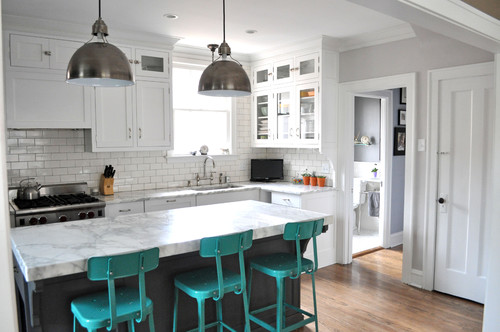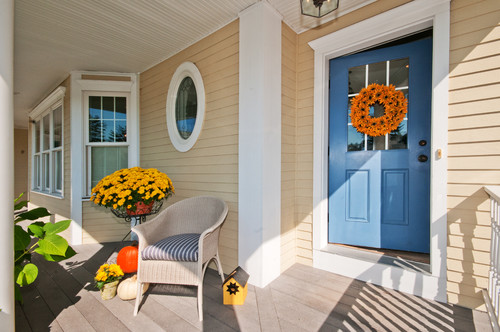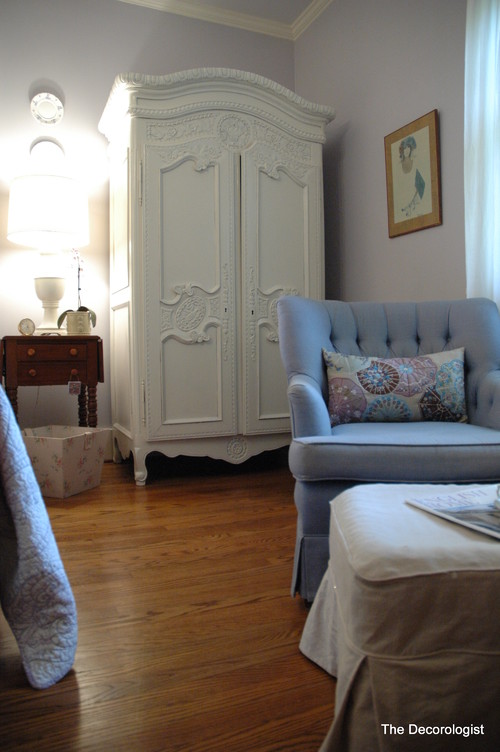After spending hundreds to thousands of dollars on landscaping, how do you know if you’ll recoup your investment? Homeowners may wonder if their efforts are worthwhile compared to interior projects. In actuality, landscaping comes back in resale value more than you may think.
According to a publication from Virginia Tech, a home landscape has been valued at around 15 percent of a home’s total value. Furthermore, certain landscape aspects add more to the home than others, including:
![]() Design: 42%
Design: 42%
![]() Plant size: 36%
Plant size: 36%
![]() Diversity of plants: 22%
Diversity of plants: 22%
The study cited that a $150,000 home could go from $8,300 in worth to almost $19,000 more with the addition of a landscape. That’s a lot for just adding a front yard to your home. Here is more information about these elements and how to increase the value of your home.
Landscape Design

Photo courtesy of Jardin Passion Landscape ConHow you design the landscape is the first step in creating a beautiful and valuable front yard. If you plant shrubs, flowers and trees without a design in mind, you could run into maintenance issues down the road. This is why you might call in a landscape designer to help. Landscape designers have the knowledge when it comes to creating landscapes to match homes and climate conditions. They know which trees, shrubs and flowers mix versus which ones might be troublesome. The end result will be a manageable, uncluttered and beautiful landscape that you can enjoy for little to no hassle.
Plant Size

Photo courtesy of Applegate Landscape Co.On a visual level, adding different plant sizes will make your front yard look more appealing. Adding different shapes and colors complements your home and the lawn. On a maintenance level, mixing small and big plants will cut down on clutter in your yard. If you have too many bushy plants, their roots and branches could get mixed together and cause maintenance issues. So plant different trees, shrubs and flowers to make your landscape colorful and varied to add onto your home’s appeal and save on trouble.
Diverse Plants

Photo courtesy of M&M Garden DesignsIntertwined with the plant sizes you choose are how diverse they should be. You don’t want to plant only shrubs and trees with leaves. Vary it up with fruit trees or shrubs that have flowers to add color to the front yard. You also might choose annual and perennial flowers to sprinkle across your yard. You will need to replace annuals every year, but that gives you the chance to try out different flowers. Perennials, on the other hand, will last for many years and can endure harsh winter conditions.
Conclusion
Whether you hire a landscape designer or decide to tackle the front yard landscape yourself, be sure to include these three elements. Adding them to your front yard will pay back dividends in your home resale value, and it will make your home more attractive to buyers.
Photos courtesy of DesignMine
Andrea Davis is the editor for HomeAdvisor, which helps homeowners find home improvement professionals in their area at no charge to ensure the best service in the shortest amount of time.
WRITTEN BY ANDREA DAVIS













 The general answer to Bill’s general question? “That depends on how desirable to identified target buyers Bill’s property is and whether there is a buyers’ or sellers’ market in that location.” At the same time, Bill’s goals regarding the sale are just as important to consider in choosing a marketing strategy for price — list and sale.
The general answer to Bill’s general question? “That depends on how desirable to identified target buyers Bill’s property is and whether there is a buyers’ or sellers’ market in that location.” At the same time, Bill’s goals regarding the sale are just as important to consider in choosing a marketing strategy for price — list and sale.











 Houzz
Houzz  3. Millennials Love Incentives
3. Millennials Love Incentives

 There are a number of ways to increase your purchasing power and bring real estate ownership within reach. The important thing is not to give up on making an effort before you have explored opportunities available to you in this real estate market:
There are a number of ways to increase your purchasing power and bring real estate ownership within reach. The important thing is not to give up on making an effort before you have explored opportunities available to you in this real estate market: